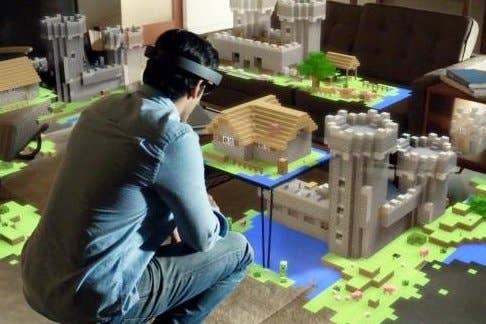HoloLens' field-of-view may be a problem without a solution
Kudo Tsunoda says the final hardware's FOV won't be "hugely noticeably different"
Microsoft's Kudo Tsunoda has said that the final version of the HoloLens hardware may have a similarly limited field-of-view to its divisive prototype.
HoloLens was first shown at Microsoft's Build conference earlier this year, and the majority of reports emerging from E3 have cited a now familiar problem: the holograms are very impressive, but the field-of-view is limited to a degree that could hurt its commercial potential
Of course, with the final specs and release date yet to be finalised, it's legitimate to assume that improvements will be made. However, in an interview with Giant Bomb, Kudo Tsunoda was measured in his assessment of how much progress we can expect to see in this vital area.
"The hardware isn't final so none of the things are completely done," he said. "I think you're never going to get to full peripheral field of view. Certainly the hardware we have the field of view isn't exactly final, but I wouldn't say it's going to be hugely noticeably different either."
"It's like Microsoft created an amazing alternate universe and walled it away"
The Verge
This could be a bigger problem than Tsunoda makes it sound. As Re/code stated based on its own impressions of the technology: "What was shown onstage [the MInecraft demo] wasn't what Minecraft HoloLens will look like, unless Microsoft can make a major breakthrough in glasses technology before the HoloLens' release."
Other prominent voices have expressed the very same concern. Forbes called HoloLens' field-of-view "tiny," constantly forcing the user to confront the limits of the fiction with which they are presented.
"You find yourself constantly aware of the little edges of your world as you look around, with the holograms slipping out of existence if you move your head even a small amount - in some ways, it serves to remind you of how amazing the hologram itself actually is, but it keeps the experience from normalizing."
In the emerging fields of virtual and augmented reality this "normalizing" of the experience is crucial - you could swap out that term for "presence" or "immersion," which dominate the theory around what developers should strive to create for the player.
However, while Forbes pointed to a major failing of the technology, it also called the parts that work "tantalizingly brilliant." For The Verge, the list of positives is long, but the field-of-view's limitations trump them all.
"It's a shame, because the holograms are uncannily real. The objects nearly always look solid, and they stay in place almost perfectly. The voice recognition is fairly perceptive. The headset's even comfortable. If every part of HoloLens were a little bit frustrating, or its demos offered something no one wanted, it would be easy to write it off as a failed prototype. Instead, it's like Microsoft created an amazing alternate universe and walled it away."
None of this is helped by Kinect, which was notable only in its total absence from Microsoft's E3 conference. Six years ago, the watching world was knocked out by Milo & Kate: a demo in which promises were made that reached far beyond the eventual technology's actual capabilities, promises that hung over the games that followed like a malign spirit.
Today, Kinect feels like an afterthought. Improving HoloLens' field-of-view may be crucial if it is to avoid the same fate.


